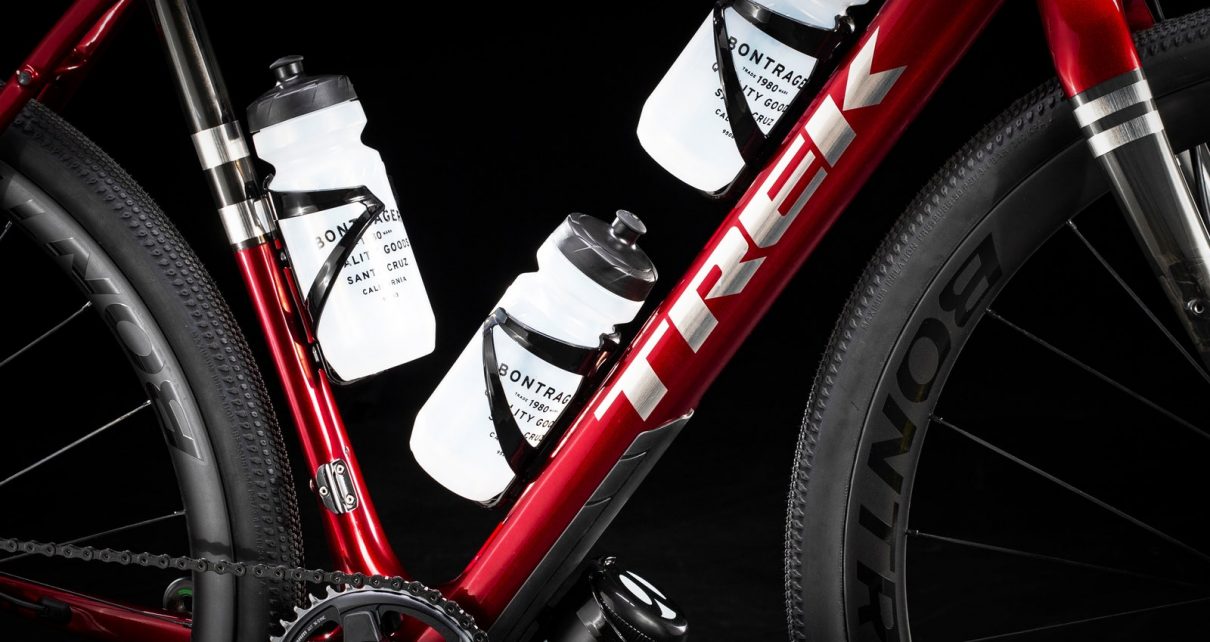The first time I heard about the Trek Checkpoint was in the middle of a cold winter’s eve in early 2018. My boyfriend, Brian, was daydreaming about a bike to get him through the next Dirty Kanza XL race, which was coming up the following May. The 350-mile ultra-endurance event is held on the gravel roads that snake through the Flint Hills of Kansas. Brian was obsessed with the carbon-fiber Checkpoint SL6. Of the two dozen bikes he has owned in his life, only two have been a Trek, so I was intrigued with his new infatuation.
“Most gravel bikes are modified cyclocross racing bikes too delicate for long-distance rides on rugged terrain, and they don’t have enough tire clearance,” he explained. “Or worse, they are plodding Clydesdales.”
In his mind, the Checkpoint was a perfectly balanced trifecta of lightweight, comfortable, and durable—in other words, the ultimate machine for the upcoming endurance contest.
Brian bought the SL6 and rode it at the DK XL a few months later. He had a solid race until midnight, when, at mile 100, he was brought down by a catastrophic sidewall tear on his rear tire. After previously racing and finishing the shorter DK200 five times, the sharp Flint Hills finally got the best of him on his first extended effort. But the DNF did not diminish Brian’s love for the Checkpoint.
Lucky for all of us, Trek’s 2020 build, the smoked-cranberry-red SL7, is an even more impressive freedom machine. It should be at the top of the list for any cyclist who loves adventure riding or racing.
The foundation for the bike is its IsoSpeed frame, a standard on all carbon Checkpoints. Trek debuted the frame design in 2012 on the Domane, a road-racing bike it developed in conjunction with the elite professional Swiss racer Fabian Cancellara, who used it to ride rugged one-day races like the cobblestone-filled Paris-Roubaix. The design “decouples” the frame’s rigid triangle at the intersection of the seat tube and top tube in order to add some flex, which creates a more comfortable, smooth ride without abandoning the responsiveness that’s mandatory in a racing bike. The Checkpoint is the best application for the IsoSpeed frame yet, especially for those of us who live in states where elongated shoulder seasons force cyclists to ride on everything from mud to hardpack gravel to ice to broken pavement in one short after-work ride.
The most exciting upgrade on the 2020 version of the bike is the SRAM 1 x 12 wireless electronic drivetrain. For those who might question the expense-to-efficacy ratio of upgrading to wireless electronic shifting, there are two reasons to never look back. First, you can forever put behind you the grind of a poorly timed downshift while riding uphill. SRAM’s Force eTap AXS shifter and accompanying drivetrain allows for smooth, precise shifting, always, without the punishment of a wonked-out derailleur down the road. Second, I mistakenly believed that electronic shifting meant I would be beholden to plugging my bike into a power source after every ride. But the system’s battery lasts at least 20 hours and can be monitored in two ways: by the light on the rear derailleur (green indicates there’s still juice, red indicates it’s time to plug in) or by downloading the SRAM AXS app. When paired with the bike, the app monitors the battery life, keeps the firmware of the components up to date, and allows you to customize your controls. Still, if you are going long on this bike—remote rides in wilderness areas where you’ll be on the road longer than 24 hours—it would be wise to carry an extra SRAM eTap battery () or a charger.
For 2020 Trek also outfitted the SL7 with Bontrager Aeolus Pro 3V OCLV Carbon wheels. Not only do they shave pounds off the total weight, but the wheels’ tubeless-ready rims also let you ride with a lower tire pressure, which allows for increased traction and comfort without the scary prospect of getting a pinch flat. One of the biggest selling points on the Checkpoint is that, while the standard tire size is 700 x 40 c, its additional clearance allows for a tire width of up to 45 c. That extra width comes in handy when riding or racing in unpredictable conditions over equally unpredictable terrain, while hauling a heavy load of water and food.
A standard unsung feature on the Checkpoint is the stranglehold dropout. This horizontal sliding dropout system provides 15 millimeters of chain-stay length adjustment, which allows the rider to alter the bike’s geometry to accommodate different riding styles. I haven’t messed around with this option yet, because I like the stability and responsiveness of the current ride just fine. But if I were to load the bike down with frame packs and four water bottles—entirely possible thanks to extra mounts on the top tube, seat tube, and both sides of the downtube—the added weight might necessitate more stability, which I would get if I lengthened the chain stay using that stranglehold dropout.
The one upgrade that I added to the SL7 was my own saddle, a Specialized Power Comp with Mimic. A women’s saddle is the most important female-fit-specific component on a bike, and Specialized has mastered it. Trek’s Arvada Elite saddle is OK, but after a four-hour Saturday ride, I decided a bike that’s so smooth, stable, and fun to ride deserved a more comfortable saddle.
I’ve even started fantasizing about racing the DK XL, and I might even have a chance. Because of Covid-19, the springtime race has been postponed until September.



